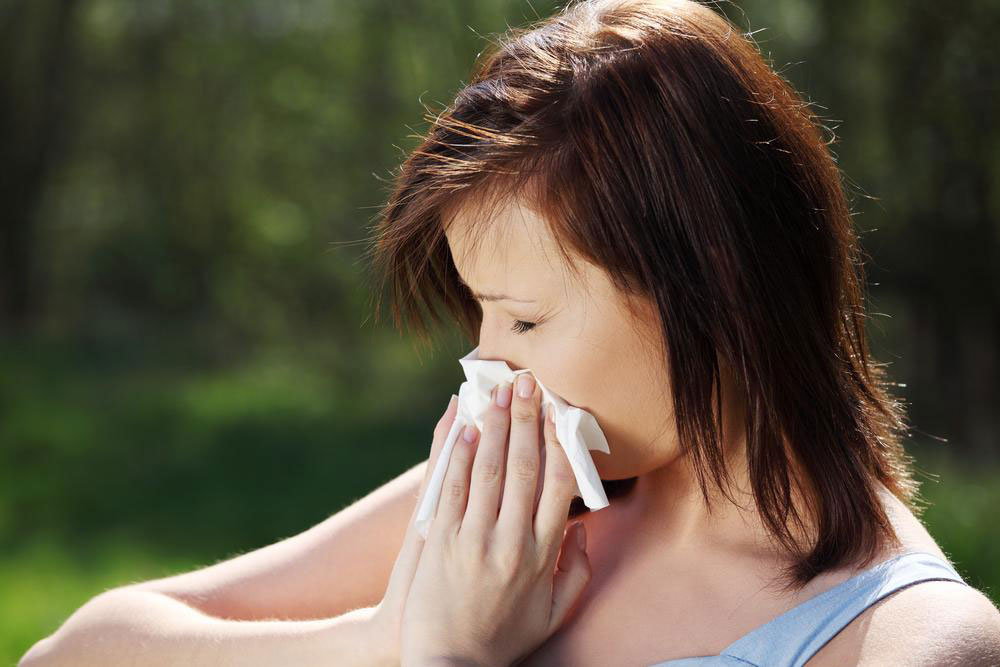Everything You Need to Know about Mold Allergies

Do you often have an allergy across seasons? If yes, then you could be sensitive to mold spores as well as other fungi. Mold lives everywhere, and you can accidentally send a lot of spores in the air by upsetting a source of mold. Inhaling spores causes allergic reactions in some people, and this is why many people suffer from symptoms of mold allergy during the monsoons.
Although there are various kinds of molds, very few of them can cause an allergic reaction. Most molds grow on fallen leaves and rotten logs, on grain and grass, and in composite piles. Outdoor molds are not active during the winter, and they mostly grow on plants in the spring. At home, this fungus thrives in damp areas, and you can look for it in the kitchen, basement, and bathroom. Let’s have a look at the various symptoms of mold allergy:
Symptoms of mold allergies
The symptoms of a mold allergy are similar to the symptoms of other types of allergies. Some of these signs include congestion, sneezing, runny nose, itching, and dry or scaling skin. Indoor molds cause allergic reactions throughout the year while spores from outdoor molds are responsible for these symptoms during the summer or fall.
When mold spores get into your nose, they can cause signs of hay fever. Sometimes, these spores may get to the lungs and trigger asthma. The chemical released by mold spores causes the symptoms of mold allergy when they get into the lungs or nose. This reaction can happen right away or may take some time. At times, mold allergy causes delayed symptoms, and this leads to worsening asthma and nasal congestion over time. If your symptoms get worse when you expose yourself to a moldy or damp room such as the basement, then this means that you are allergic to mold.
Note that edible fungi such as dried fruit, mushrooms, soy sauce, vinegar or foods that contain yeast do not cause symptoms of mold allergies. It is likely that your body’s reaction to food fungi is due to the direct effect these foods have on the blood vessels. For instance, fermented drinks like wine have an element called histamine. Histamine is a chemical that is released by allergy cells during allergic reactions. Thus, foods containing histamines may trigger an allergy-like response upon consumption.
Tips to control the symptoms of mold allergies
One can find mold in grasses, piles of leaves, and on logs as it requires moisture to grow. In the house, it may thrive in ill-ventilated and damp places. You can protect yourself from the symptoms of a mold allergy in your house by following these tips:
Using a dehumidifier: Reducing the humidity in your home helps to fight mold growth. If you live in a large house, place the dehumidifier in the basement or any moist area where mold grows easily. It is better to set up a dehumidifier that drains moisture automatically without the need to empty the reservoir because forgetting to do so will create more mold growth.
Ensure that the AC functions smoothly: Running the air conditioner during warm months helps to take the moisture out of the house, and you will have fewer mold problems if you keep the unit clean and maintain it well. You need to clean the ducts and change the filters regularly.
Fix leaks: If you notice water leakage, be sure to fix it immediately to prevent any mold growth. Always check for leaks in your bathtubs, basement, laundry room, on the roof, and by all faucets.
Focus on the flow of air in your home: Another way to get rid of mold is to ensure that air flows freely in the house. Use an exhaust fan in the bathroom after showering and in the kitchen after you cook or wash dishes. Additionally, you must keep the inner doors of the house open to stem the growth of mold.
Scrub it away: If you come across mold in your house, do not hesitate to scrub it with a 10% bleach solution. Make sure that you wear a protective face mask and gloves while cleaning a space. If you can’t use bleach due to respiratory problems, consider using a water and vinegar solution.
Clean your house regularly: Since fungi can grow on any damp surface, you need to clean areas like the bathroom, laundry room, and kitchen regularly. In the kitchen, mold lurks on dry pans, garbage cans, and refrigerator door gaskets. In your laundry room, wipe the washing machine’s rubber seal and leave its lid open to get rid of the moist air.
You can avoid the symptoms of mold allergies, whether in your home or outdoors, with the help of the tips outlined above. These tips will reduce your exposure to mold, and thus, prevent allergic reactions.



